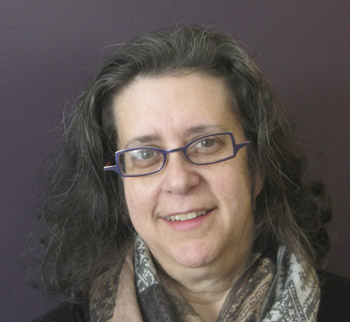WINNIPEG — The 2011 census, also known as the National Household Survey (NHS), has raised more questions than it answers concerning the size of Winnipeg’s Jewish community.
While the community leaders had been working on the assumption that the population is about 16,500, the 2011 NHS, released last spring, recorded just 10,735 Winnipeg respondents who identified themselves as Jewish by religion – compared to 12,045 in 2001 – and 12,000 Winnipeggers who identified themselves as Jewish by ethnicity, down from 14,440 in 2001.
Now, after several months of having the NHS data reviewed by a demographer, the Jewish Federation of Winnipeg’s board recently had a look at a preliminary analysis of the numbers and what they imply for the community.
“In 2009, we asked the demographer who analyzed the 2001 census figures to project what 2011 would look like,” said Faye Rosenberg Cohen, the federation’s planning and community engagement director.
“His estimate then was 16,500. We asked him to analyze the new NHS numbers, factoring in a rough estimate of Jewish seniors in nursing homes [who weren’t counted in the census] and Israeli immigrants who don’t list a religion in the surveys. Our figure comes out to about 15,000.”
In her report, Rosenberg Cohen noted the voluntary aspect of the most recent NHS. “We can’t have any data on people who didn’t reply,” she said.
While more data may be available from Statistics Canada later on, she notes, the 2011 NHS did confirm some trends that the federation was already tracking and raises some questions that may require further investigation.
First, looking at the Israeli immigrant community here, which includes many Russian Israelis, Rosenberg Cohen confirmed that the NHS figures are close to the number of Israeli arrivals here that have been numbered among Jewish Child and Family Service clients in recent years.
“The Israeli responses to the NHS regarding religion and ethnicity reflect intermarriage and a lower level of religious identification that would be common among some Jews from the former Soviet Union,” she said.
“Preliminary analysis indicates that 57 percent of Israelis who came to Winnipeg identified themselves as Jewish. But, in our community, all of the Israelis here who are served by our agencies are considered part of our community. Many of them send their children to our Jewish schools, come out to our programs, attend holiday dinners and are more visibly active in the community than some of their Winnipeg-born peers,” she added.
“It’s a harder sell reaching out to people who are born and raised here.“
As for younger members of the community, Rosenberg Cohen points out that young Jews often identify themselves on demographic surveys as “Canadian.” “Does the NHS exclude many younger Jews here who may still be interested in Jewish communal life, but don’t show up in the census numbers?” she asked.
Another question she raised is how to count and engage intermarried families in the community. She cited the recent Pew study in the United States that reported a 58 per cent intermarriage rate among Jews who have married within the past eight years. The number for Winnipeg within the same age group would be similar, she said.
One positive figure is a slight growth in the number of Jewish high school- and university-aged students here since the 2011 census. Does this mean more members of that age group are staying in Winnipeg, Rosenberg Cohen asked, or is it a reflection of more recent immigration?
And the lower number of kids in the community, she said, may reflect an out-migration of people of child-bearing age, a low birth rate among Canadians or intermarried families not listing their children as Jewish.
As to the geographic dispersion of Winnipeg’s Jewish population, the decades long decline of the Jewish population in north Winnipeg and concurrent growth in south Winnipeg is continuing. Whereas 40 years ago, just over 50 percent of the population lived in north Winnipeg – the former centre of Winnipeg Jewish life – and just under 40 per cent lived in south Winnipeg, today just over 10 per cent live north and about 65 per cent live in traditional south Winnipeg Jewish neighbourhoods. More than 20 per cent now live elsewhere in the city. Those living in non-traditional Jewish areas include recent immigrants, younger couples and Jewish Winnipeggers who do not identify with the community.
